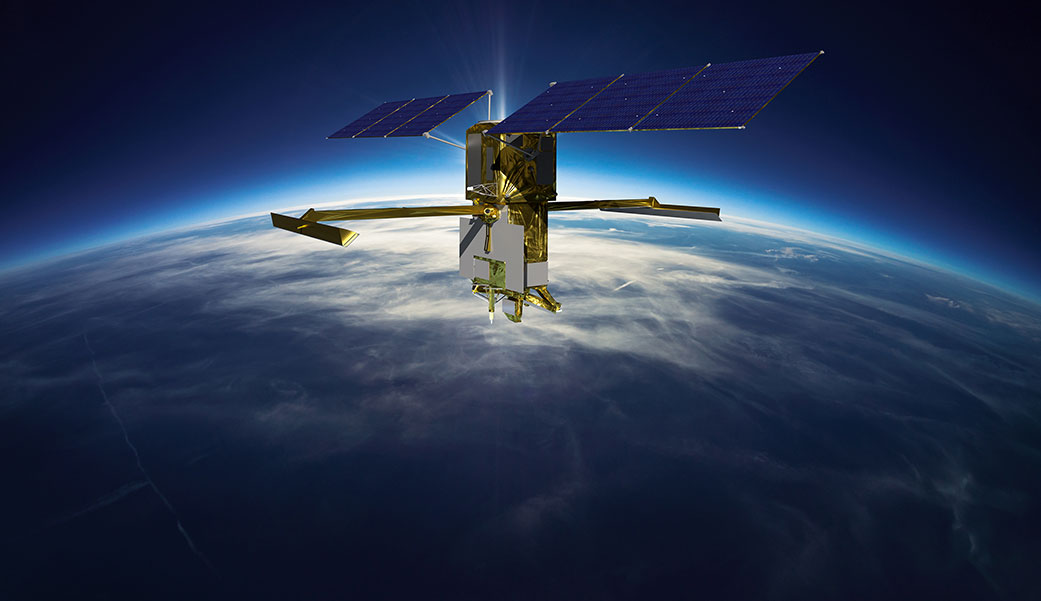The new wave of oceanographers: Robin Rolland
Interview : Robin Rolland - PhD student in physical oceanography focusing on internal wave-mesoscale interactions and their impact on the energy cascade
Robin Rolland completed his bachelor’s degree in Biology and his Master’s degree in Marine Sciences at Aix-Marseille University. He is currently a PhD student at Sorbonne University at LOCEAN.
SWOT AdAC: What is your field of research and how did you choose it?
Robin Rolland : I am interested in internal wave-mesoscale interactions and their impact on the energy cascade. That is, how these interactions modulate energy transfers between currents of different spatial scales. I am studying this around the Sicilian Channel which has many topographic and bathymetric constraints. It is also one of the few areas in the Mediterranean Sea where there is a significant tide.
I will also be interested in this question in the Algerian basin, where I will participate in the BioSWOT-Med campaign to measure turbulence at (deci)metric scales.
This subject was proposed to me by my Master 2 supervisor Francesco d’Ovidio, coordinator of the SWOT AdAC consortium, as well as Pascale Bouruet-Aubertot and Yannis Cuypers, both specialists in internal waves. The internship went well and the subject interested me because it dealt with fine scales, although I knew little about internal waves at that time. So I chose to defend this subject to the doctoral school. I was able to discover a whole new exciting part of physical oceanography.
SWOT AdAC : What is the link between your research field and SWOT?
Robin Rolland : SWOT will allow us to observe ocean currents that have a spatial scale of a few tens of kilometers or even a few kilometers. At these scales, the signal from internal waves (tidal waves in particular) is significant and mixes with that of the balanced (geostrophic) dynamics of the ocean, which can already be observed by satellite today.
The internal wave-mesoscale interactions I am interested in occur at scales that SWOT will be able to observe. We hope to take advantage of these data as well as the BioSWOT-Med data to learn more about these interactions, and to compare model data with satellite and in situ observations.
More generally, current knowledge of currents at the scales that SWOT will observe is largely model-based, but there are few observations to validate this knowledge. SWOT will partially fill this gap. For the energy exchange issues I am interested in, these observations will be of great help!
SWOT AdAC : What excites you about SWOT and the BioSWOT-Med campaign? How will you contribute to the campaign?
Robin Rolland : First, it is the breakthrough that SWOT will enable in the observation of ocean surface currents and the technological feat that makes it possible. Second, it’s the number of projects and research topics that SWOT has helped stimulate years before its launch. There is a real buzz in the community that is very exciting as a young researcher.
As far as the campaign is concerned, it is a unique opportunity to be able to cross-reference campaign data with satellite data at high spatial and temporal resolutions (1-2 satellite passes per day). The SWOT data will be valuable for the interpretation of the data collected in situ, to give a broader view of the surface dynamics of the sampled area. More generally, a campaign is always a unique experience!
During the BioSWOT-Med campaign, I will be in charge of turbulence measurements at (deci)metric scales using a Vertical Microstructure Profiler. The analysis of the campaign data and SWOT data will be an integral part of my thesis.
SWOT AdAC : What are your plans after the campaign?
Robin Rolland : The analysis of the campaign data first. I also have other projects underway, including Lagrangian analyses in the Sicilian Channel. Currently, I am finalizing a first paper that I hope to submit before the start of the campaign.
Concerning the post thesis, I don’t know yet. For the moment, I would like to continue in research but I do not close any door.
BioSWOT- Med Blog


